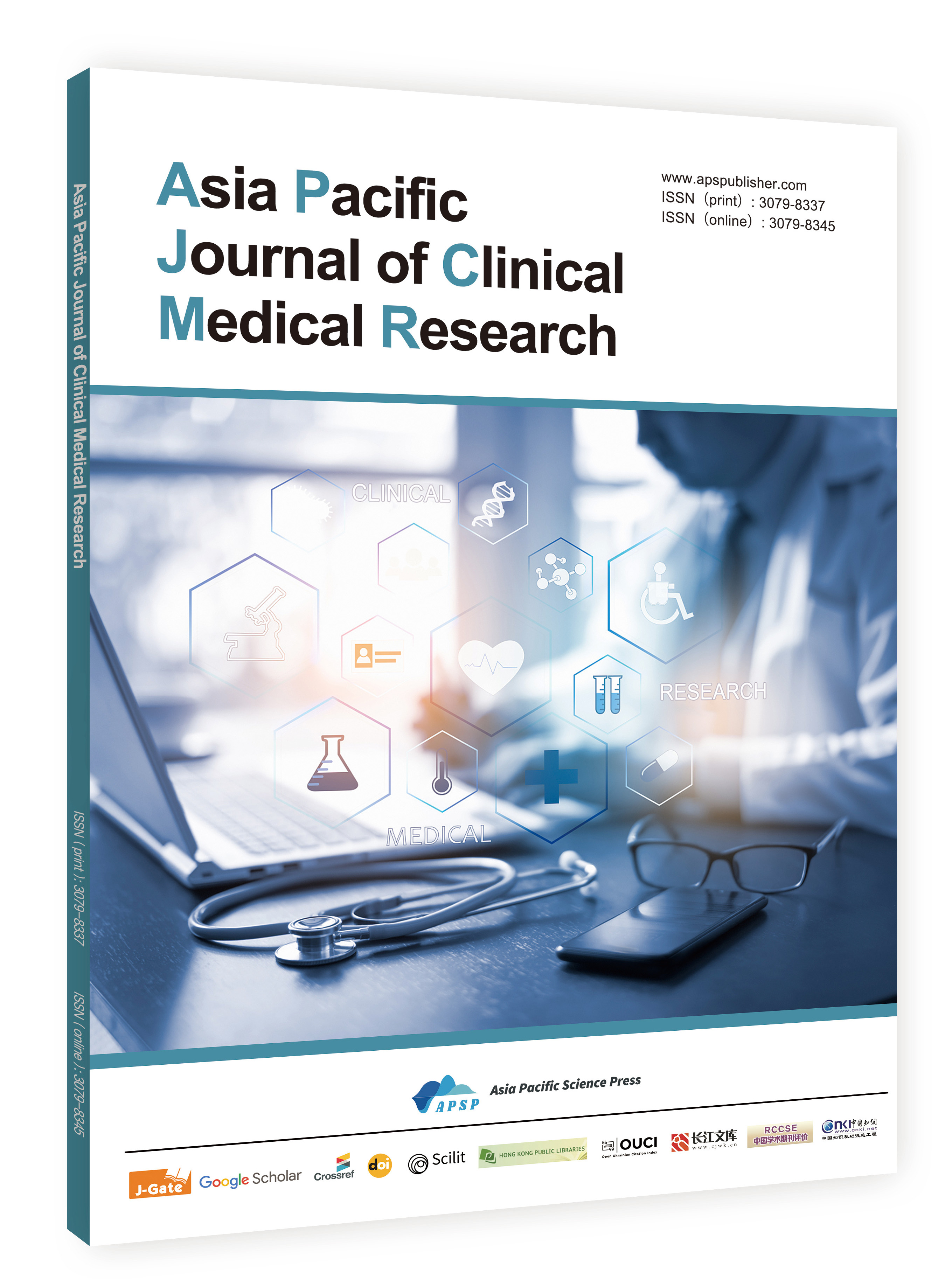Study on the Mechanism of Salvia miltiorrhiza in the Treatment of Prostatic Hyperplasia Based on Online Pharmacology
DOI:
https://doi.org/10.62177/apjcmr.v1i1.335Keywords:
Salvia Miltiorrhiza, Benign Prostatic Hyperplasia, Network Pharmacology, Active Components, Signaling Pathway, Molecular MechanismAbstract
Objective: This study aims to investigate the potential molecular mechanism of Salvia miltiorrhiza in treating benign prostatic hyperplasia (BPH) based on network pharmacology. Methods: Active components of Salvia miltiorrhiza were screened via the TCMSP database, and their potential targets were predicted using Swiss Target Prediction. BPH-related targets were obtained from Gene Cards and OMIM databases. Common targets between the herb and BPH were used to construct a protein–protein interaction (PPI) network via STRING and visualized using Cytoscape. Core targets were identified, and Gene Ontology (GO) and Kyoto Encyclopedia of Genes and Genomes (KEGG) enrichment analyses were conducted (P≤0.01). Results: A total of 57 active components and 818 targets of Salvia miltiorrhiza were identified. Intersection analysis yielded 458 potential targets associated with BPH. PPI network analysis revealed core targets including SRC, PIK3R1, and PIK3CA. GO enrichment analysis indicated that the targets were primarily associated with biological processes (BP) such as calcium ion homeostasis, cellular components (CC) including focal adhesions, and molecular functions (MF) such as tyrosine kinase activity. KEGG pathway analysis indicated that Salvia miltiorrhiza may exert therapeutic effects through pathways including MAPK, PI3K-Akt, and calcium signaling (P≤0.01).Conclusion: Salvia miltiorrhiza may regulate BPH through a multi-component, multi-target, and multi-pathway network, providing a theoretical basis for its clinical application.
Downloads
References
Liedtke V, Stöckle M, Junker K, et al. Benign prostatic hyperplasia - a novel autoimmune disease with a potential therapy consequence?[J]. Autoimmunity Reviews, 2024, 23(3): 103511.
Kim E H, Larson J A, Andriole G L. Management of benign prostatic hyperplasia[J]. Annual Review of Medicine, 2016, 67: 137-151.
De Nunzio C, Presicce F, Tubaro A. Inflammatory mediators in the development and progression of benign prostatic hyperplasia[J]. Nature Reviews. Urology, 2016, 13(10): 613-626.
Light A, Jabarkhyl D, Gilling P, et al. Erectile function following surgery for benign prostatic obstruction: A systematic review and network meta-analysis of randomised controlled trials[J]. European Urology, 2021, 80(2): 174-187.
Dahm P, Brasure M, MacDonald R, et al. Comparative effectiveness of newer medications for lower urinary tract symptoms attributed to benign prostatic hyperplasia: A systematic review and meta-analysis[J]. European Urology, 2017, 71(4): 570-581.
Li Shenglong, Lu Gang, Jin Guangwei, et al. Basic and clinical research progress of traditional Chinese medicine in the treatment of benign prostatic hyperplasia[J].Chinese Journal of Traditional Chinese Medicine, 2024, 49(21): 5817-5828.
Lu Linjie, Xie Jianyun. Advances in clinical research on the treatment of benign prostatic hyperplasia with traditional Chinese medicine[J]. Journal of Practical Chinese Medicine, 2023, 39(9): 1916-1919.
Wang Yuechen, Hou Yawei, Wang Zhenguo. Research Status and Hotspot Analysis of Salvia Miltiorrhiza Based on Bibliometrics[J]. Chinese herbal medicine, 2025, 56(4): 1318-1337.
Liu Bi'e. Study on the medication rules and network pharmacological mechanism of traditional Chinese medicine compound in the treatment of chronic prostatitis[D]. Guangzhou University of Chinese Medicine, 2022.
Li Shao, Xiao Wei. Expert Consensus on the Application of Network Pharmacology to the R&D of New Drugs in Traditional Chinese Medicine[J]. Chinese Journal of Traditional Chinese Medicine,2024, 49(18): 5055-5068.
Ru J, Li P, Wang J, et al. TCMSP: a database of systems pharmacology for drug discovery from herbal medicines[J]. Journal of Cheminformatics, 2014, 6(1): 13.
Presicce F, De Nunzio C, Tubaro A. Is early benign prostatic hyperplasia (BPH) treatment worthwhile?[J]. Urologia, 2017, 84(3): 142-147.
Shaofeng C, Chunxu L, Qiang G. The mechanism of lingze tablets in the treatment of benign prostatic hyperplasia based on network pharmacology and molecular docking technology[J]. Andrologia, 2022, 54(10): e14555.
Choudhry M, Gamallat Y, Khosh Kish E, et al. Downregulation of BUD31 promotes prostate cancer cell proliferation and migration via activation of p-AKT and vimentin in vitro[J]. International Journal of Molecular Sciences, 2023, 24(7): 6055.
O’Reilly D. Altered calcium signalling in prostate cancer facilitates progression to castrate resistance[D]. Dublin City University, 2021.
Liu C M, Shao Z, Chen X, et al. Neferine attenuates development of testosterone-induced benign prostatic hyperplasia in mice by regulating androgen and TGF-β/smad signaling pathways[J]. Saudi pharmaceutical journal: SPJ: the official publication of the Saudi Pharmaceutical Society, 2023, 31(7): 1219-1228.
Downloads
How to Cite
Issue
Section
License
Copyright (c) 2025 Shaoyang Hou, Zhaobin Fan, Xinchao Wang, Keming Li, Hailing Ding, Xuehui Wang, Yihui Li, Xing Gao

This work is licensed under a Creative Commons Attribution-NonCommercial 4.0 International License.
















